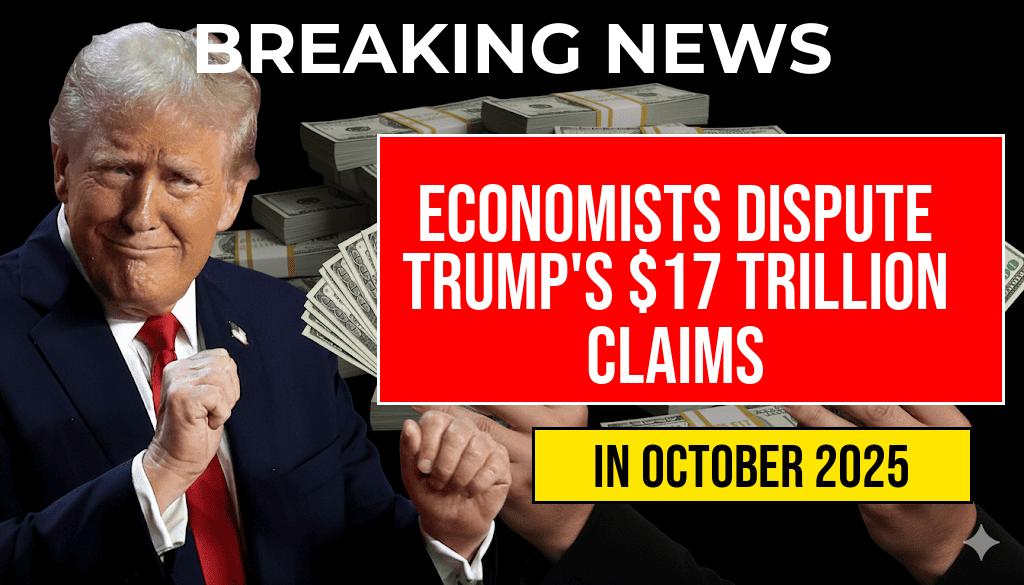Recent remarks by former President Donald Trump regarding a potential $17 trillion global investment have sparked a heated debate among economists and political analysts. Trump claims that his administration’s policies would lead to unprecedented foreign investment in the United States and abroad, a statement that has drawn both support and skepticism. While some experts see merit in the idea of significant foreign capital inflow, others question the feasibility of such a large-scale economic transformation. This article delves into the various perspectives surrounding Trump’s investment assertions, exploring the potential implications for the U.S. economy and global markets.
Trump’s Investment Promise: A Closer Look
During a recent rally, Trump asserted that his economic policies would create a “magical” environment for investors, projecting that this could generate $17 trillion in global investments. The former president emphasized deregulation, tax cuts, and a pro-business atmosphere as key drivers of this potential investment influx. His supporters argue that these factors could indeed attract substantial foreign capital, revitalizing industries and creating jobs.
Support for Trump’s Bold Prediction
- Historical Context: Proponents of Trump’s claims point to the significant foreign direct investment (FDI) seen during his administration, which reached record levels in certain sectors.
- Market Sentiment: Supporters argue that a favorable regulatory environment can boost investor confidence, leading to increased investment.
- Global Trends: Some economists note that shifting geopolitical dynamics may drive foreign investors to seek opportunities in the U.S., especially in technology and renewable energy sectors.
Criticism and Skepticism
Despite the optimism from some circles, many economists are cautious about Trump’s claims. Critics highlight several key concerns:
- Overestimation of Impact: Economic analysts warn that projecting $17 trillion in investments may be overly ambitious, especially without robust supporting evidence.
- Global Economic Conditions: Uncertainties in global markets, including inflation and geopolitical tensions, could hinder investment flows, regardless of U.S. policy changes.
- Long-Term Viability: Experts question whether short-term gains from deregulation can sustain long-term investment growth, especially if economic fundamentals do not support such an influx.
Comparative Analysis of Investment Trends
| Year | FDI in the U.S. (in Trillions) | Global FDI (in Trillions) |
|---|---|---|
| 2016 | 2.25 | 1.75 |
| 2017 | 2.50 | 1.90 |
| 2018 | 3.00 | 2.20 |
| 2021 | 3.70 | 2.60 |
Economic Forecasts and Future Implications
As the debate continues, various economic forecasts suggest that while there is potential for increased investment in the U.S., reaching the $17 trillion mark may be unrealistic. The Forbes economic outlook for 2022 indicates that while recovery is underway, inflation and supply chain disruptions remain significant hurdles for attracting foreign investment.
Moreover, the World Bank has released a report indicating that global FDI is expected to rebound gradually, but it may not achieve pre-pandemic levels for several years. This raises questions about the sustainability of the investment environment that Trump envisions.
Conclusion
The discourse surrounding Trump’s $17 trillion investment claim reflects broader economic uncertainties and the complexities of global investment dynamics. As experts continue to analyze the plausibility of such claims, both supporters and critics remain engaged in a vital conversation about the future of the U.S. economy. The outcome of this debate will likely influence economic policies and investor sentiment in the coming years.
Frequently Asked Questions
What are the main claims made by Trump regarding the $17 trillion global investment?
Trump claims that his policies have led to a surge in global investment amounting to $17 trillion, arguing that this investment reflects confidence in the U.S. economy and his administration’s economic strategies.
Why are economists divided over Trump’s investment claims?
Economists are divided due to differing interpretations of economic data and the actual impacts of Trump’s policies. Some argue that the claims are exaggerated, while others believe they may overlook positive trends in foreign investments.
What evidence do skeptics provide against the $17 trillion investment figure?
Skeptics point out that the calculation methods used to arrive at the $17 trillion figure may be flawed or misleading, and they emphasize the need for more rigorous analysis to support such large claims.
How does this investment claim relate to the overall U.S. economy?
The $17 trillion investment claim is tied to broader discussions about the health of the U.S. economy, including job creation, GDP growth, and how foreign investments can affect domestic economic policies.
What implications could these investment claims have on future economic policies?
If Trump’s investment claims are accepted, it could lead to a shift in economic policies, potentially prioritizing tax cuts and deregulation to further encourage foreign investments. Conversely, skepticism could lead to calls for more accountability in economic reporting.

Leave a Reply